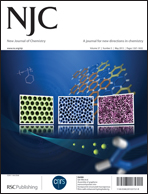The metal carbonyl complexes [η4-(CH2)3C]Fe(CO)3 and [η4-(CH2)3C]Cr(CO)4 have been synthesized containing the umbrella-shaped trimethylenemethane ligand. The prospect of using this ligand in the metal sandwich complexes [(CH2)3C]2M (M = Ti, V, Cr, Mn, Fe, Co, Ni) has now been investigated by density functional theory. The lowest energy structures of such complexes have the metal atom sandwiched between two tetrahapto trimethylenemethane ligands. Singlet spin state structures are strongly preferred for the titanium and nickel derivatives and doublet spin state structures for the vanadium and cobalt derivatives. Similarly, the triplet spin state is preferred for the iron derivative by more than 11 kcal mol−1. The preferred spin states for the chromium and manganese derivatives depend on the functional used for the structure optimization. Thus the B3LYP and B3LYP* methods predict the higher spin states, namely triplet for chromium and quartet for manganese. However, the BP86 method predicts the lower spin states of singlet for chromium and doublet for manganese. The higher spin state structures for the late transition metal derivatives, namely quintet [(CH2)3C]2Fe, quartet [(CH2)3C]2Co, and triplet [(CH2)3C]2Ni, have trihapto rather than tetrahapto trimethylenemethane ligands. The frontier molecular orbitals in the singlet [(CH2)3C]2M derivatives (M = Ti, Ni) suggest strong metal–ligand σ and π bonding but insignificant metal–ligand δ bonding.

You have access to this article
 Please wait while we load your content...
Something went wrong. Try again?
Please wait while we load your content...
Something went wrong. Try again?


 Please wait while we load your content...
Please wait while we load your content...